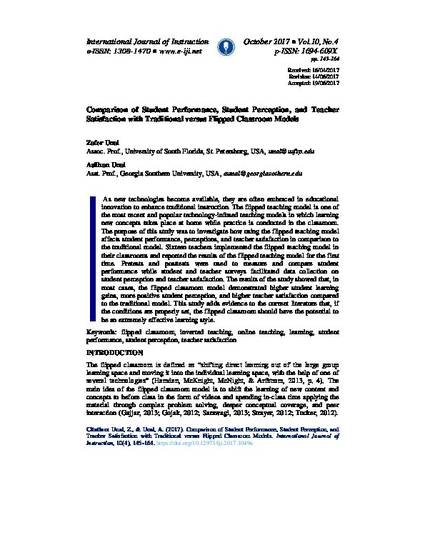
As new technologies become available, they are often embraced in educational innovation to enhance traditional instruction. The flipped teaching model is one of the most recent and popular technology-infused teaching models in which learning new concepts takes place at home while practice is conducted in the classroom. The purpose of this study was to investigate how using the flipped teaching model affects student performance, perceptions, and teacher satisfaction in comparison to the traditional model. Sixteen teachers implemented the flipped teaching model in their classrooms and reported the results of the flipped teaching model for the first time. Pretests and posttests were used to measure and compare student performance while student and teacher surveys facilitated data collection on student perception and teacher satisfaction. The results of the study showed that, in most cases, the flipped classroom model demonstrated higher student learning gains, more positive student perception, and higher teacher satisfaction compared to the traditional model. This study adds evidence to the current literature that, if the conditions are properly set, the flipped classroom should have the potential to be an extremely effective learning style.
Available at: http://works.bepress.com/unal/75/

International Journal of Instruction apply the Creative Commons Attribution-NonCommercial-NoDerivatives 4.0 International (CC BY-NC-ND 4.0) to all manuscripts to be published.